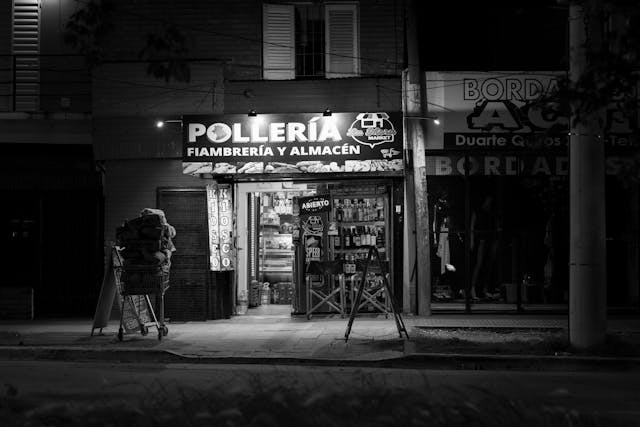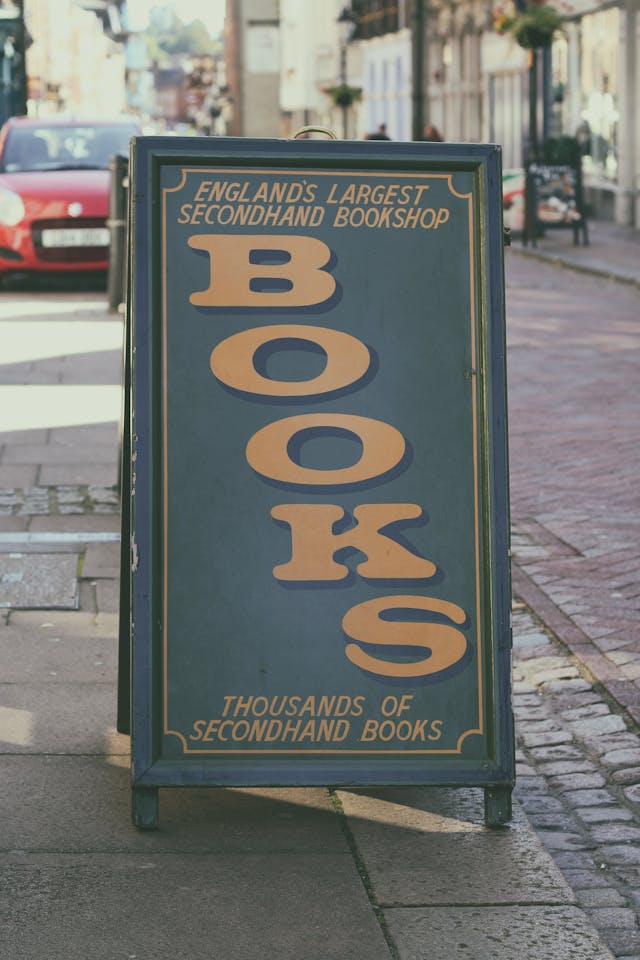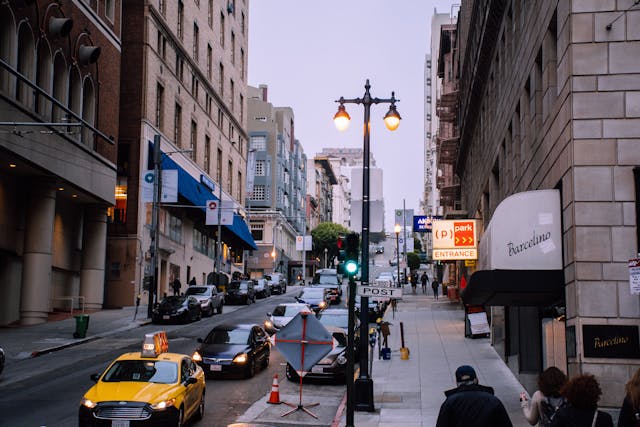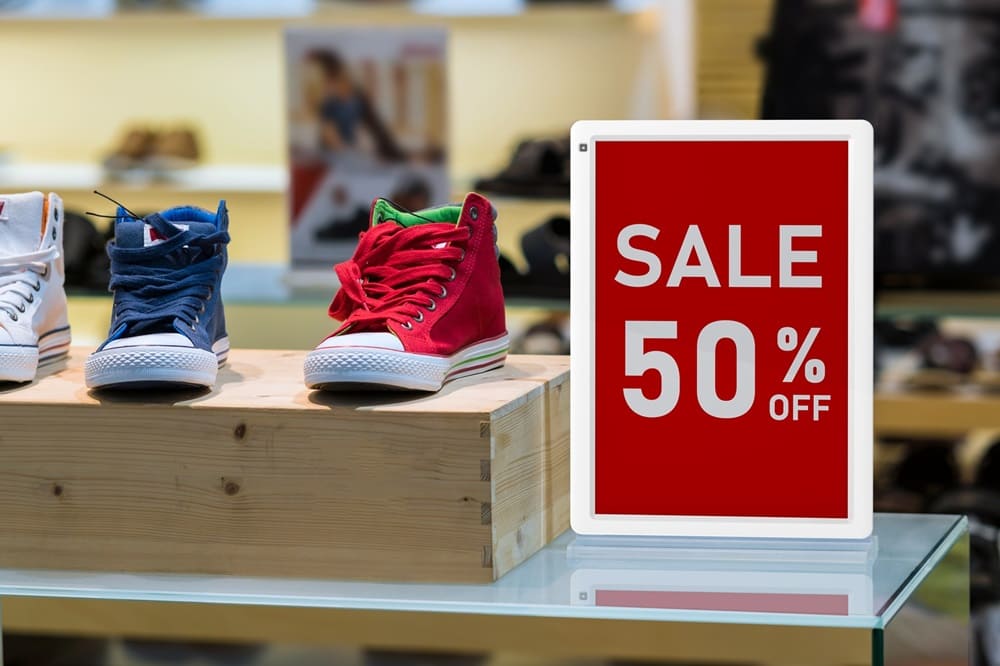Store signage influences how customers shop, guides them through the aisles, and conveys the urge to buy. From eye-catching storefront signs that draw customers in to in-store signs that guide them to merchandise, signage plays two different but complementary roles: reinforcing the brand and enhancing the shopping experience. According to research by FedEx Office, 76% of consumers would enter a store they've never visited before simply because of the sign. More than 68% of consumers believe that a store's signage reflects the quality of its products or services. In short, good signage can help you attract traffic and help you address the overall issue of customer trust.
We'll explore nine key types of store signage that retailers of all sizes can use to increase customers and improve profitability.
1. Storefront Signage
First impressions are important. Storefront signage are the first thing customers see, and new customers won't step foot into your store without a strong branding presence. According to a study by FedEx Office, 76% of customers would enter a store they've never been to simply because of the sign. A good store sign can better communicate your brand image and what you have in your store. In fact, studies show that 60% of businesses can increase sales simply by updating their store signage.
When designing your signage, make it legible and avoid clutter. Keep the fonts eye-catching so they can be seen even from a distance or in low light. If that doesn't work, try lighting them up, as people are attracted to glowing objects at night. But be careful to use the right color of light.

2. Outdoor Signage
Types of Outdoor Signage
Outdoor signage is a great way to make your store stand out and grab the attention of passersby. A restaurant with a "buy one, get one free" banner will have a stronger appeal to a hungry passerby. Common signs include:
Tower Signs: These tall signs are usually placed near roads so that they can be easily seen from a distance.
Monument Signs: They are lower and close to the ground, perfect for places like shopping malls or busy streets.
Banner and Poster Signs: They are best used for short-term promotions or grand openings.
Placing your sign in the best location is the most important step to success, so that passersby can easily see your sign.

3. Wayfinding Signage
Wayfinding signage are designed to make it easier for customers to find what they want in the store. If designed properly, customers will not be confused when shopping, and they can also be guided to browse more products.
How to make the most of it:
The clearer the better: Use concise text and clear arrows so that customers can understand at a glance
Be consistent in style: Keep the font, color and icon style consistent so that the entire space feels coordinated and organized.
Place it in the right place: Place signs where customers make decisions, such as entrances, aisle intersections and corners.

Pair it with shelf layout
The effectiveness of navigation signs is often closely related to shop shelf layout. For example, if your shelf layout is clearly divided into sections (such as "drink area" and "snack area"), then the signages can more accurately guide customers to the right area. A reasonable shelf layout and a clear guide system can help customers find the products they want faster and encourage them to visit more areas along the way to increase sales opportunities.
4. Informational Signage
Consumers need informational signage to make up their minds about buying. Whether it’s about products, services or store policies, informational signage builds trust between stores and consumers.
For information like product details, prices and opening hours, use large and clear fonts. Besides being easy to read, it’s more important to stick to the key details that customers need – think product features, prices, warranty or return policies.
5. Digital Price Signs
What are digital price signs? Digital price signs replace traditional paper labels with digital displays. As consumers demand for price transparency, digital price signs are being accepted by more and more retailers. Digital price signs can easily integrate with POS systems and inventory management systems, and the prices customers see on the shelf will match the prices they pay. By fully automating the pricing process, manual labor costs will be greatly reduced, liberating store efficiency.
If you want to take pricing efficiency to the next level, Minewtag is your ideal choice. Minewtag electronic price tags integrate seamlessly with store management systems to achieve real-time price updates, better inventory control and enhanced customer interaction.
6. Point of Purchase (POP) Signage
Placing items such as gum, snacks or gift cards next to the cash register is a simple strategy to get customers to spend extra. Adding pop signs can make this strategy more successful.
Types of POP Signage
POP signs come in many forms, including shelf labels, counter displays, and even digital screens near the cash register. These displays can be used to highlight additional items, specials, or product features, encouraging customers to add additional items to their purchase.
7.Digital Signage
Digital signage is the future of in-store marketing. It allows for dynamic content that can be changed in real-time to reflect promotions, new arrivals, or even social media feeds. It can also be used for wayfinding, entertainment, or product demonstrations. Implementing Digital Signage in Retail Interactive displays: Let customers interact with the signage to learn more about products or services. Targeted content: Use customer data to show personalized promotions based on browsing behavior. Example: A clothing store may use digital signage to showcase new collections, run promotions, or display fashion tips, creating a more engaging shopping environment.
Consider store signage as the first step in your store success strategy. From storefront signs to digital displays, every type of signage is important. Make it count!

8. Floor Graphics
Floor graphics are a smart and creative way to make the most of your store’s floor space. They help guide customers or promote specific products, making them perfect for high-traffic areas. Whether it's directing people to a sale or highlighting a new section, floor graphics can catch the eye and guide shoppers exactly where you want them to go.
When designing floor graphics, it's important to choose slip-resistant materials to ensure safety, especially in busy spots. The messaging should be clear and simple—use straightforward text and arrows so customers can quickly follow directions without confusion. For maximum impact, place the graphics in areas where people are sure to notice them, like near the entrance, along aisles, or around key promotional sections.
FAQs
1. What is the most important type of store signage?
Storefront signage is crucial because it’s the first interaction customers have with your brand, setting the tone for their shopping experience.
2. How often should promotional signage be updated?
Regular updates are key to keeping promotions fresh. It’s essential to align your signage with seasonal events or new product launches.
3. Are digital price signs worth the investment?
Yes, digital price signs save time, improve pricing accuracy, and enhance the customer experience, making them a worthwhile











